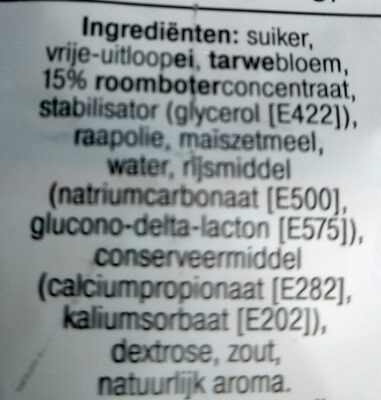Roombotercupcakes - - 320 g, 4 cupcakes van 40 g
This product page is not complete. You can help to complete it by editing it and adding more data from the photos we have, or by taking more photos using the app for Android or iPhone/iPad. Thank you!
×
Barcode: 8718907395502 (EAN / EAN-13)
Quantity: 320 g, 4 cupcakes van 40 g
Packaging: Plastic
Categories: Snacks, Sweet snacks, Biscuits and cakes, Cakes
Countries where sold: Netherlands






